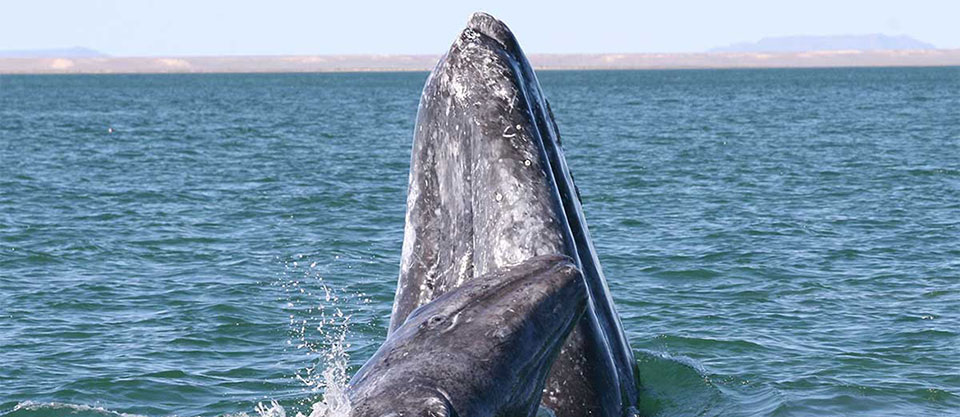Pacific “Whale Trail” Expands to California
New sites available where public can view marine life along California coast.

Look! A whale!
Gray whales such as these are often seen migrating through the sanctuary during the winter and spring. National marine sanctuaries in central California are popular areas for marine wildlife watching.
On April 18, NOAA’s Office of National Marine Sanctuaries and The Whale Trail announced new coastal sites in California where the public can view orcas and other marine mammals from shore.
Initial viewing sites near San Francisco, Santa Cruz, and Monterey will be established and outfitted with interpretative signs describing the types of whales and other wildlife that can be seen at each location as well as information about the area’s distinguishing characteristics. The first California stops along the Whale Trail are in publicly-accessible locations adjacent to Gulf of the Farallones and Monterey Bay national marine sanctuaries which are internationally recognized for wildlife watching, especially whales.
The California viewing sites will be added to the Whale Trail website. The inaugural viewing sites include Point Reyes, Lighthouse Point in Santa Cruz, and Point Lobos State Reserve in Monterey County. Additionally, the Crissy Field visitor center for Gulf of the Farallones National Marine Sanctuary, Aquarium of the Bay in San Francisco, Monterey Bay National Marine Sanctuary's (MBNMS) Exploration Center in Santa Cruz, and MBNMS Coastal Discover Center in San Simeon will also be added to the Whale Trail website as venues where the public can learn about whales and other marine mammals.
In May, NOAA and Whale Trail will hold public events in San Francisco, Monterey, and Santa Cruz featuring information about the Whale Trail to be followed with a lecture by international orca researcher Erich Hoyt. Hoyt will discuss his decades-long research on orcas in the north Pacific, including connections to orcas in California.
Established in 2008 along Washington’s coastline, Whale Trail is a non-profit organization that works with NOAA and other organizations to raise awareness of marine waters, connect visitors to marine life, inspire stewardship, build community and promote land-based whale watching. Through current sites and signs along the Whale Trail, including two on every Washington State ferry, presently more than 22 million people learn about the Whale Trail each year.